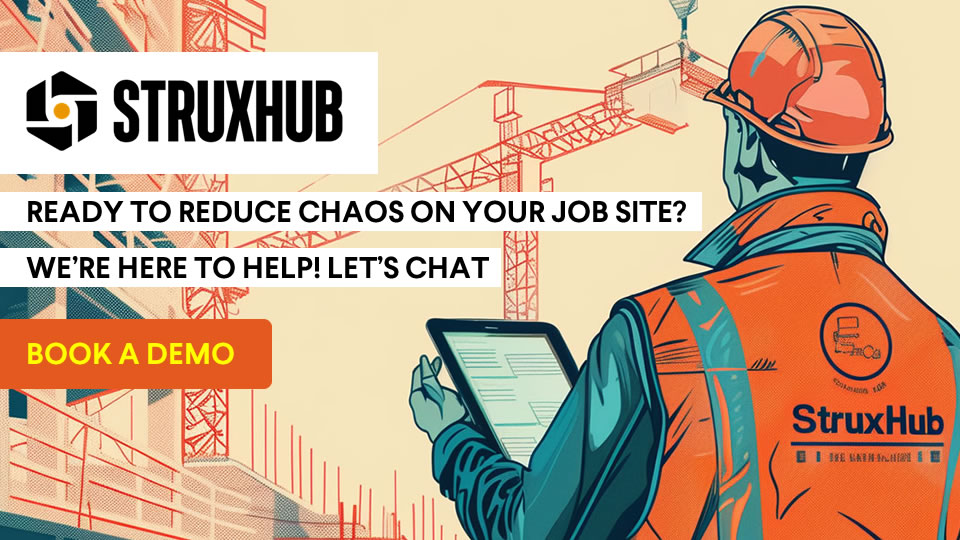Top 10 Strategies to Master a Construction Work-in-Progress Report
Table of Contents:

In the world of construction project management, keeping track of work-in-progress is essential for ensuring project success. A construction work-in-progress report provides a snapshot of the current status of a project, highlighting accomplishments, challenges, and areas requiring attention. By mastering the art of creating an effective work-in-progress report, construction professionals can enhance communication, monitor project progress, and make informed decisions. In this comprehensive guide, we will explore the top 10 strategies to help you master a construction work-in-progress report and optimize your project management processes.
Set Clear Objectives for the Report
To create a meaningful work-in-progress report, it is crucial to establish clear objectives. Determine the purpose of the report and the specific information you want to convey. Are you focusing on progress, budget, schedule, or all of these aspects? Clarifying your objectives will help you structure the report and ensure that it aligns with the project’s goals and stakeholders’ needs.
Gather Accurate and Timely Data
Accurate and timely data is the foundation of an effective work-in-progress report. Collect data from reliable sources, such as project management software, daily logs, and team members’ reports. Ensure that the information is up-to-date and reflects the current status of the project. Timely data allows for accurate analysis and informed decision-making.

Focus on Key Performance Indicators (KPIs)
Identify the key performance indicators (KPIs) that matter most to your project’s success. These may include metrics such as project milestones, budget variances, schedule adherence, safety records, or quality performance. By focusing on the most relevant KPIs, you can provide a concise and meaningful overview of the project’s progress and performance in the work-in-progress report.
Present Information Clearly and Concisely
A well-structured work-in-progress report should present information in a clear and concise manner. Use headings, bullet points, and subheadings to organize the content and facilitate readability. Avoid excessive jargon or technical language and strive for simplicity. Present the information in a logical flow that allows readers to easily understand the project’s status and any significant developments.
Include Visuals and Graphs
Visual elements can greatly enhance the impact and understanding of a work-in-progress report. Incorporate charts, graphs, and visual representations of data to provide a visual summary of the project’s progress. Use color coding or icons to highlight key information or trends. Visuals make the report more engaging, enabling stakeholders to quickly grasp the project’s current state and make data-driven decisions.
Omar N. | Field Engineer
“Prior to StruxHub, it was a struggle to keep up. I had a 6 by 5 ft whiteboard in a conference room. I wasn’t able to collect delivery requests from our trades and announce them to the airport in time.”
Provide Analysis and Interpretation
A work-in-progress report is not just a compilation of data; it should also provide analysis and interpretation. Include a section that explains the significance of the reported information, identifies trends, and highlights areas of concern or success. By offering insightful analysis, you provide stakeholders with a deeper understanding of the project’s performance and facilitate meaningful discussions.
Related Articles:
Best Guide to Construction Management Software
The Best Guide to Delivery Management Systems (DMS) for Commercial Construction
Identify Risks and Mitigation Strategies
Risk management is a critical aspect of construction project management. In your work-in-progress report, identify potential risks that may impact the project’s progress or success. Clearly outline the mitigation strategies in place to address these risks. This proactive approach demonstrates your commitment to risk management and assures stakeholders that you are actively working to minimize potential disruptions.
Communicate Progress and Challenges
The work-in-progress report serves as a communication tool to keep stakeholders informed of the project’s progress and challenges. Clearly communicate accomplishments, milestones achieved, and any challenges encountered during the reporting period. Transparently sharing this information fosters trust, promotes collaboration, and allows stakeholders to provide timely support or guidance if needed.
Set Actionable Goals for the Next Reporting Period
End your work-in-progress report by setting actionable goals for the next reporting period. Based on the analysis of the current status, identify specific objectives and milestones to be achieved in the upcoming timeframe. This forward-looking approach keeps the project on track and provides a roadmap for future success.
Seek Feedback and Continuous Improvement
Embrace a culture of continuous improvement by seeking feedback on your work-in-progress reports. Engage with stakeholders, project teams, and supervisors to gather input and suggestions for enhancing the report’s effectiveness. Actively incorporate feedback into future reports to refine your approach and ensure that the report continues to meet stakeholders’ expectations.
Mastering the creation of a construction work-in-progress report is a valuable skill that empowers construction professionals to effectively monitor project progress, communicate with stakeholders, and make informed decisions. By implementing the top 10 strategies outlined in this guide, you can optimize the report’s structure, accuracy, and relevance. Set clear objectives, gather accurate data, focus on key performance indicators, present information clearly, and leverage visual elements.
Provide analysis, identify risks and mitigation strategies, communicate progress and challenges, and set actionable goals. Seek feedback and continuously strive for improvement. With these strategies in place, your construction work-in-progress reports will become a valuable tool for managing projects successfully, fostering collaboration, and driving project excellence.
Unlock the Full Potential of Your Construction Projects with StruxHub
StruxHub enhances efficiency and coordination across all project phases, providing a single source of truth that eliminates silos and fosters collaboration. Real-time updates, financial management tools, and seamless commvunication features ensure that all team members and stakeholders are aligned and informed, reducing the risk of errors and delays. With comprehensive solutions for document management, risk mitigation, and quality control, StruxHub maintains project integrity and safety, while mobile access and integration capabilities further enhance project flexibility and efficiency.
StruxHub’s Key Features and Benefits:
- Advanced Delivery Management: Automate and optimize your delivery schedules, ensuring materials arrive just in time, every time.
- Site Communication: Utilize georeferenced maps and instant messaging to keep every team member informed and aligned.
- Construction Materials Management: Track inventory levels and manage materials procurement with ease, reducing waste and avoiding project delays.
- Construction Safety & Inspection Workflows: Implement customizable mobile forms for conducting safety inspections and managing compliance documentation effortlessly.
- Short-Term Scheduling: Visualize project tasks with detailed floor plans, linking each activity to specific locations for better planning accuracy.
- Construction Resource Management: Efficiently allocate personnel and equipment, maximizing productivity and reducing idle time.
StruxHub’s Product Offering:
- StruxHub Deliveries: Simplifies the coordination of incoming deliveries, ensuring materials and equipment are precisely timed to project needs.
- StruxHub Logistics: Offers intelligent site logistics planning, from crane scheduling to space allocation, for smoother operations.
- StruxHub Safety: Elevates on-site safety standards with easy-to-use tools for inspections, permits, and incident reporting.
- StruxHub Scheduling: Enhances project timelines with intuitive scheduling tools that ensure tasks are completed efficiently and on time.
With StruxHub, construction companies can look forward to a streamlined, more efficient project execution that delivers on time and within budget. Embrace the power of innovation and take your construction projects to the next level.
Don’t miss out on the opportunity to optimize your construction management processes with StruxHub. Sign up for a free demo today. Let’s build smarter, together.

StruxHub
Experience the power of StruxHub today and witness firsthand how it can revolutionize your construction operations.


